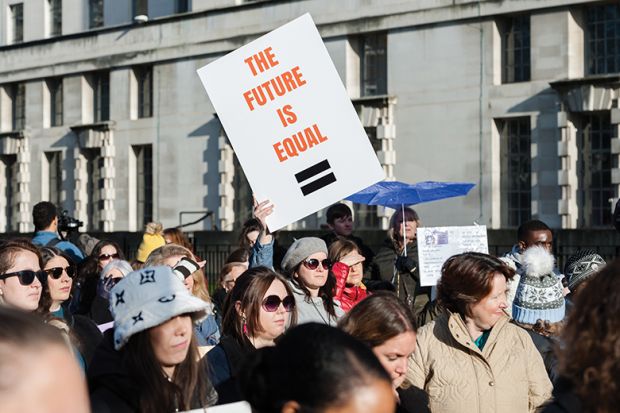Global scholarship is moving slowly towards gender parity in terms of researcher numbers, according to a large-scale study of authorship data, but major inequalities remain in areas such as patents and collaboration.
An Elsevier study of bibliometric data around article authorship, grant funding and innovation finds that although all but one country – Argentina – still has more men than women publishing research, noticeable progress has been made over the past 20 years in most nations.
However, the report paints a worrying picture for gender equality in terms of grants, research leadership and knowledge transfer.
For the report, published on 5 March, Elsevier analysed authorship data in its Scopus database of published research, mainly comparing two time periods: 1999 to 2003, and 2014 to 2018. It showed that in most countries there were about 20 more women publishing for every 100 men in the later time period.
In two subjects – nursing and psychology – there were more women than men publishing in the 2014-18 period. But other areas – such as engineering, computer science and physics – remained a long way from parity.
Further analysis of the data by career length suggested that greater gender parity among researchers in the early part of their careers was driving the changes over time.
For instance, in most nations there were 30 to 40 more women per 100 men in the most junior group in 2014-18 compared with the most senior group of authors.
The tendency for more gender inequality among senior ranks of researchers is also likely to provide an explanation for other patterns in the data.
For instance, corresponding and last authors on papers were more likely to be men than the average overall, especially in some life and health sciences. And men were much more likely than women to be grant winners.
Across all subjects and countries, men tended to have more co-authors than women, with the gap widening as publication history increased. And data in the report also suggest that both men and women may preferentially collaborate with authors of the same gender.
However, some of the starkest figures for a continuing gender imbalance in some areas of research came from information on patents.
The ratio of women to men named as inventors on patents was just 12 per 100 in the European Union (including the UK) from 2012 to 2016, a change of just 3 women per 100 men from 1999 to 2003.
Lesley Thompson, director of academic and government strategic alliances at Elsevier, said the figures on innovation were “stark” and “a real concern”. Although some important research was starting to focus on the issue, the area was ripe for “real acceleration and concentration”, she said.
“If we’re really going to translate research into innovation and economic prosperity, we have got to have all the talents working on that,” she said.
Find out more about THE DataPoints
THE DataPoints is designed with the forward-looking and growth-minded institution in view
POSTSCRIPT:
Print headline: Women advance in numbers
Register to continue
Why register?
- Registration is free and only takes a moment
- Once registered, you can read 3 articles a month
- Sign up for our newsletter
Subscribe
Or subscribe for unlimited access to:
- Unlimited access to news, views, insights & reviews
- Digital editions
- Digital access to THE’s university and college rankings analysis
Already registered or a current subscriber? Login








